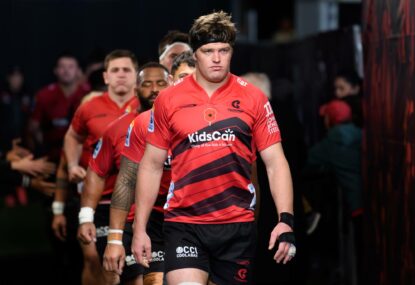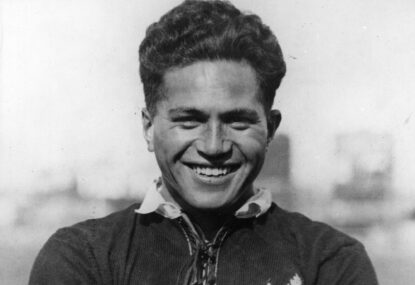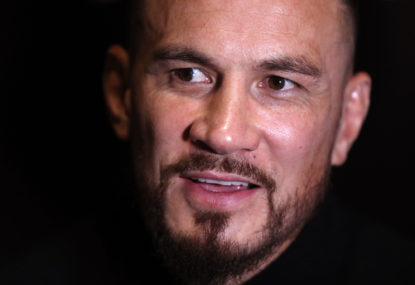With the World Cup commencing in just over two months, there are a lot of things that need to be finalised and put into place.
Teams are going through the process of selecting the strong few to play on the biggest stage, coaches are going through game plans and options, players are calculating their strength and endurance to peak at the right time, stadiums in New Zealand are going through the final checklists to make sure the spectators have the best experience, and volunteers are putting their hands up to assist the thousands of people looking for help.
Amongst all these preparations, the kit sponsors of the various teams launch their jerseys onto the world stage. All the big names have a chance to impress the fans – Kooga with a number of teams headlined by the Wallabies; Adidas with a few teams and their flagship team, the All Blacks; CCC has always a presence and their headline of the the Springboks, as well as some other brands.
The World Cup jersey will be the jersey the people remember, and if a team wins, that jersey is cemented in history as the winning jersey, so their may be a lot of things at stake, especially pride. The World Cup jerseys are different from any other jersey as they have to follow strict IRB World Cup regulations.
Each jersey needs to have the World Cup logo on the front breast, placed on the right and the countries national sporting logo placed on the left with the kit sponsors’ logo in the centre, and, of course, no commercial sponsorship allowed.
Most teams and countries have no issue with the arrangement and abide by it without a stir or concern.
The two stalwart jerseys that need some modification with the national sporting logo are the Wallabies and the Springboks. During non-World Cup years, the Wallabies have the Wallaby logo placed on the jersey as well as the national sporting logo. The Wallaby is on the right and the coat-of-arms is on the left.
This arrangement has been around since the first touring days of the men in gold and green and has not been too much of a political or personal issue for players or supporters.
The men who pull over the gold jersey to represent Australia in the arena of rugby are known as, and will always be known as the Wallabies.
The Wallaby logo is completely omitted during the World Cup so as to make space for the World Cup logo and follow the IRB regulations. The Wallaby isn’t moved to another part of jersey and their is no protest to omitting the Wallaby for this tournament. After the World Cup, the Wallaby is reinstated and the game goes on as per usual.
This seemingly simple understanding doesn’t seem to cross over to the South Africa or it’s passionate supporters. I am not claiming that one country is more passionate than the other – they are equally passionate for their respective teams as each other – rather the approach that one group of supporters has compared to the other.
South Africa has had a unique political history which is still relatively fresh in people’s minds, and this may lend to the fact that South African sports supporters are still at ends with the governing body’s approach to sporting culture in South Africa, especially rugby.
The government wanted to ‘unite’ all teams playing under the flag so made it compulsory that all national teams play with the Protea badge on their jersey to symbolise unity.
It took SARU (South Africa Rugby Union) a while to adopt this change, but they did and the Protea badge was placed on the Springbok jersey two years ago.
This meant that the Springbok emblem needed to be moved from the left breast to the right breast.
At the time many people opposed this move saying that the days of Springboks were numbered and it would be a matter of time before the green and gold jersey would be known as the Proteas.
So far, this extreme change has not happened.
This passion for the Springbok emblem was again reignited with the World Cup jersey. As with the Wallaby jersey, the national emblem was kept and the Springbok logo was omitted. This created fierce opposition and the governing body allowed the Springbok to stay but it was shifted to the sleeve so as to meet IRB regulations.
People again are complaining that it’s only a matter of time before the Springboks are renamed and politics has it’s way.
These misguided supporters seem to forget that the Springbok will be placed back onto the right breast after the World Cup and that South Africa isn’t the only team to change the badging of a jersey.
I guess the reason for the extreme passion, is that political interference/influence is dictating how sport should be in the effort to move forward. The South African rugby team has been known as the Springboks for over a hundred years, and it has had many stigma attached to it, most notably being a symbol and sport of the oppressive white rule in the apartheid era.
Things have changed since then and Mandela led this change so as to incorporate South African history into the Springbok symbol, not just white history.
The passion for the badge runs deep and when this badge is threatened, people stand up and speak up against any threat. A badge maybe an embroidery on a piece of cloth but for many it’s a symbol of pride, country and history.
I understand these people and their feelings towards a badge, but no matter what it becomes, it’s the people’s passion that counts.
Even if the Springbok logo is eventually taken off the jersey, the men that wear the green and gold jersey will always be known as the Springboks.


































































































